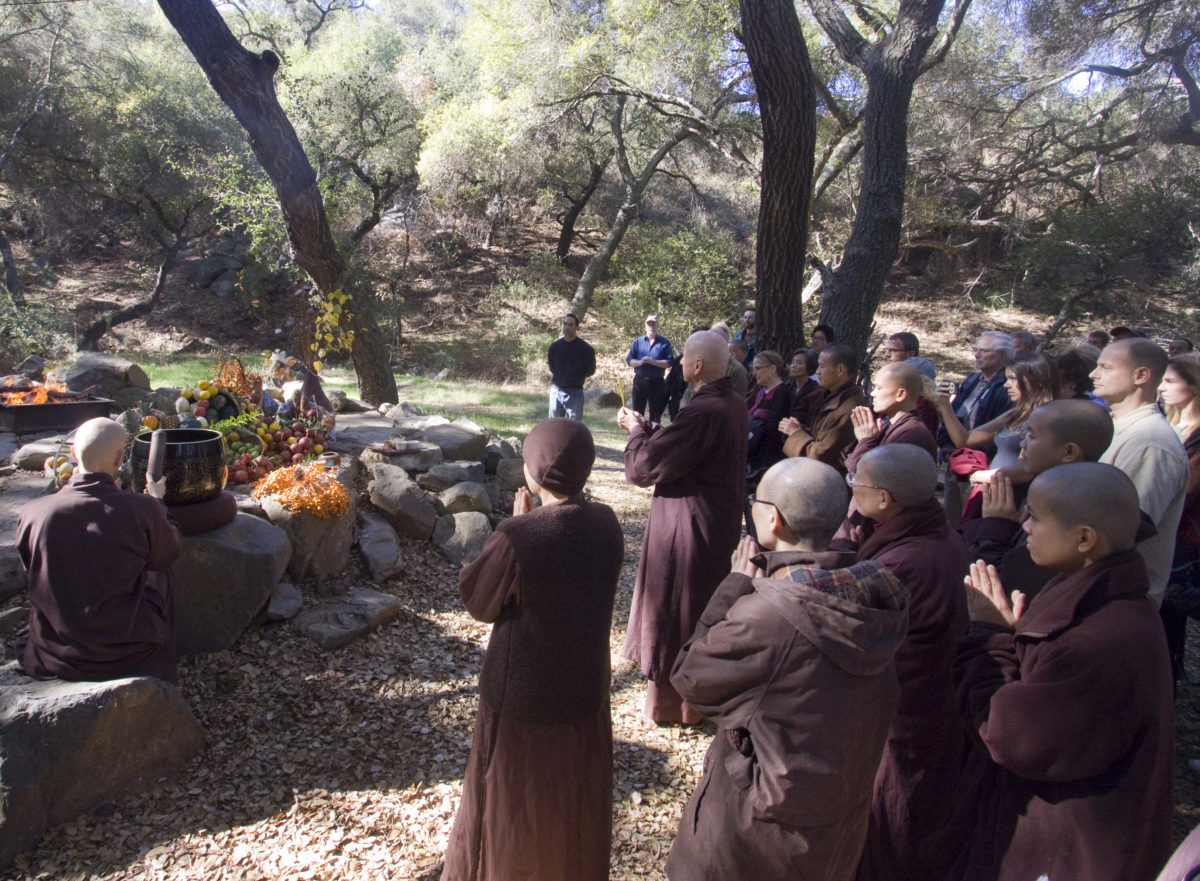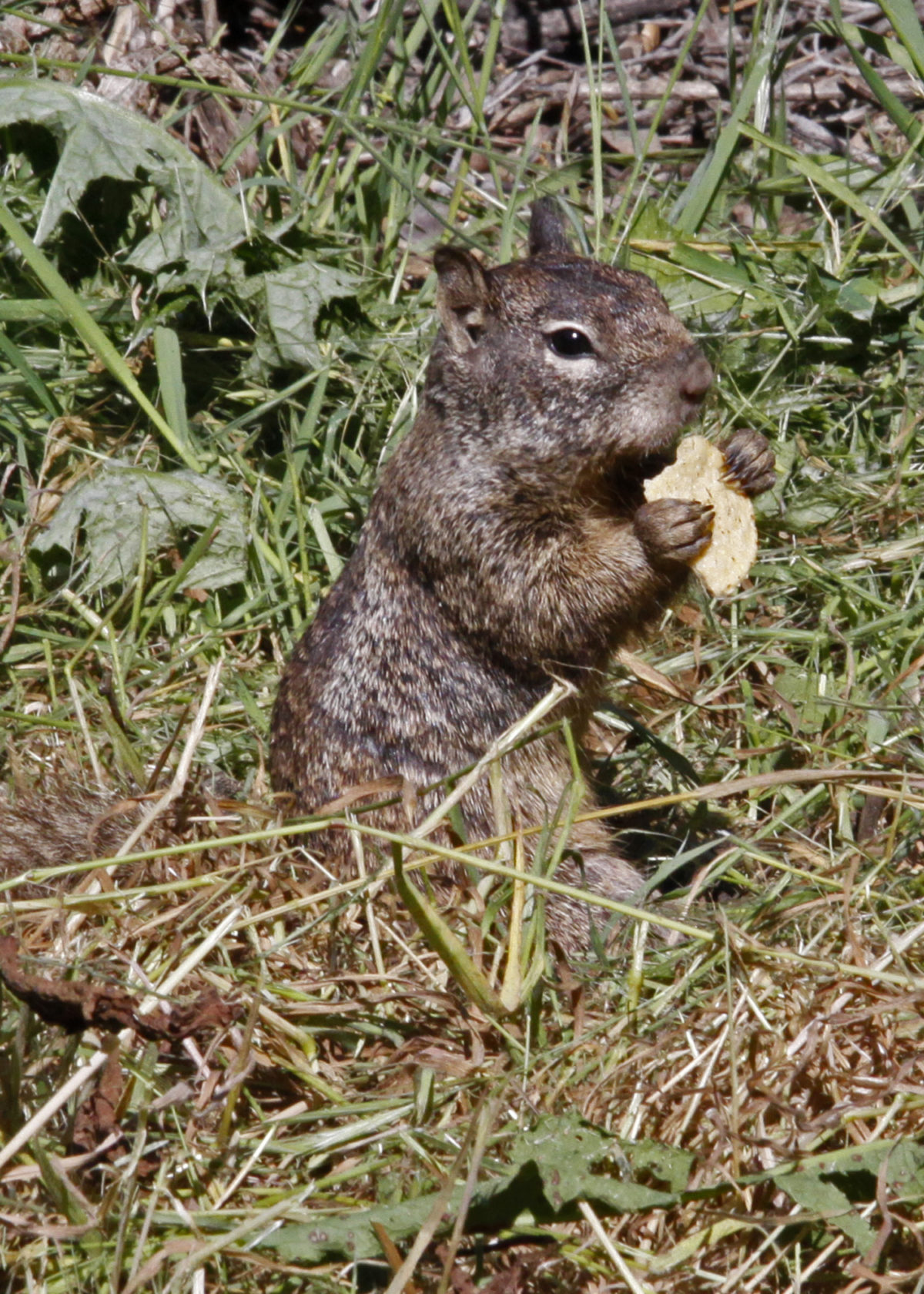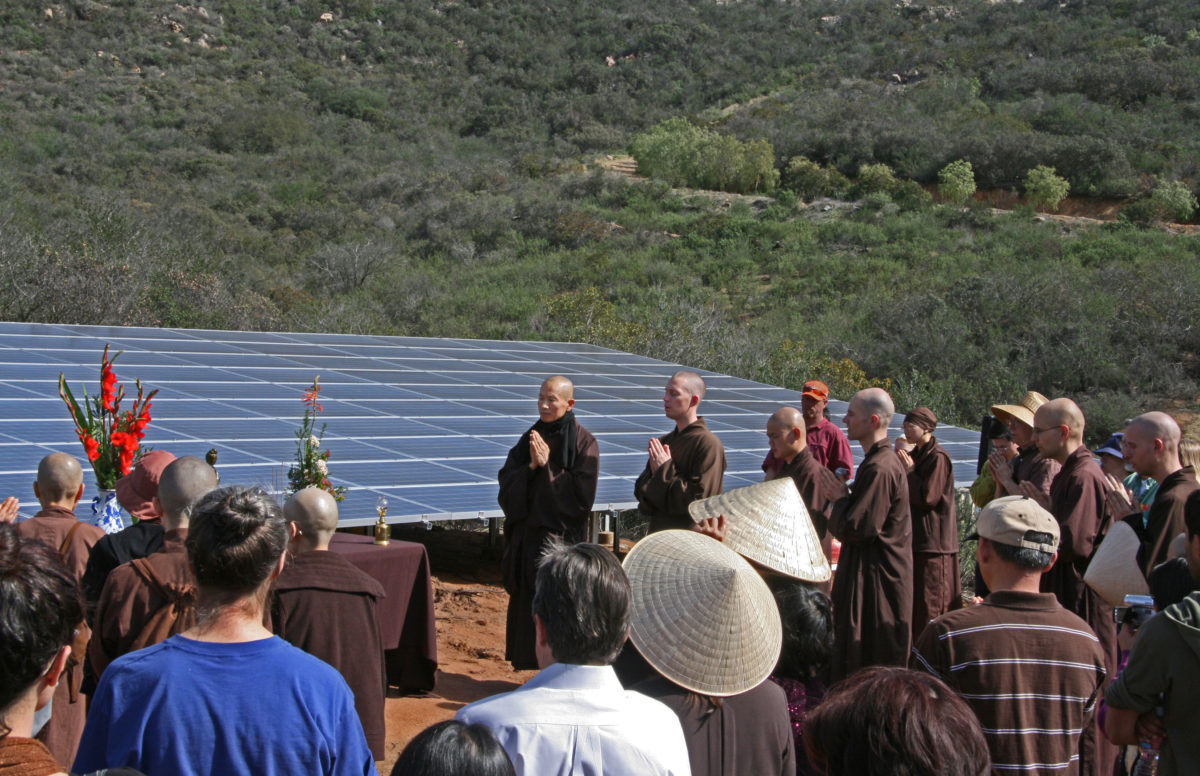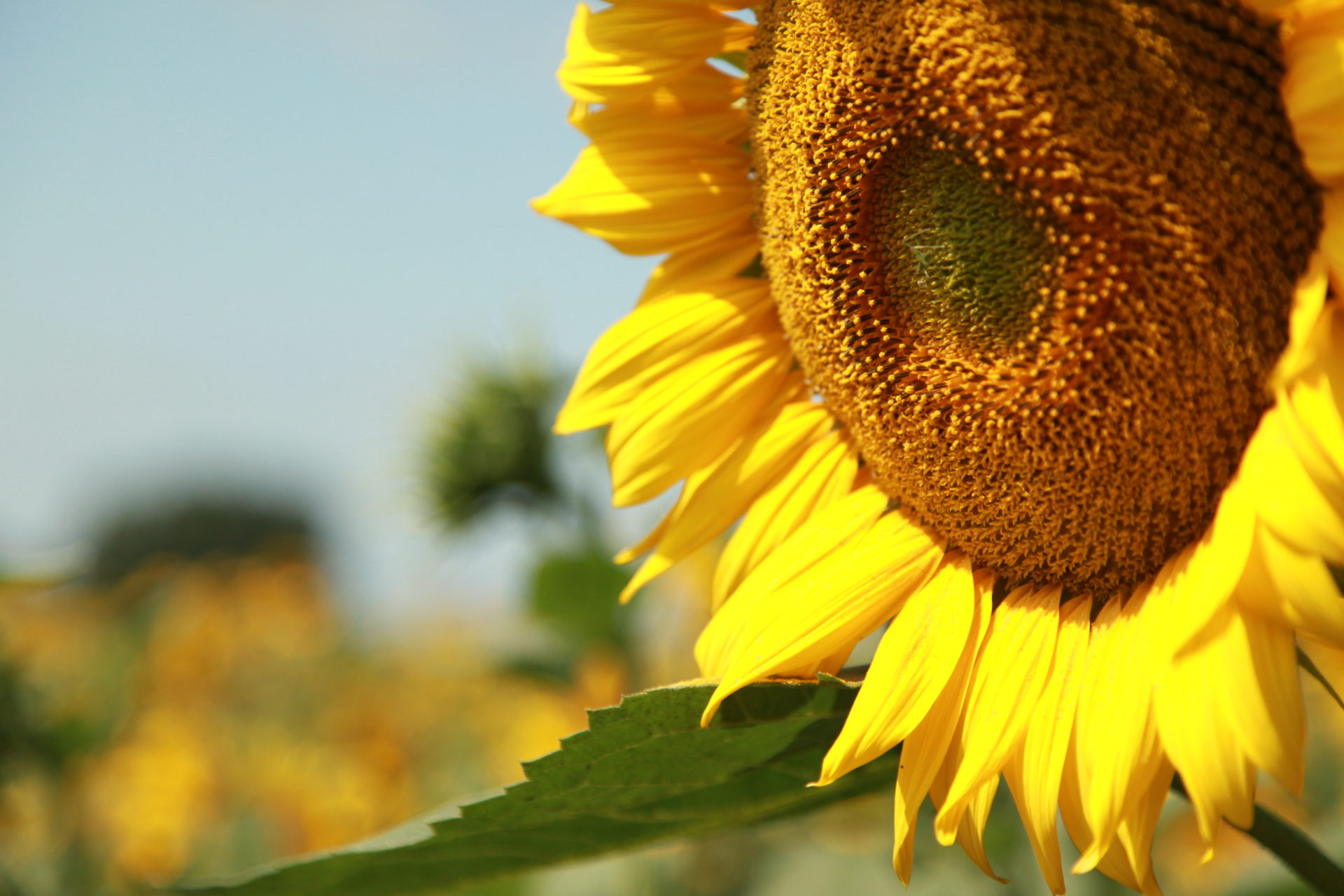Deer Park Monastery Takes Steps for Mother Earth
By Laura Hunter

BONG. BONG. Each morning when the temple bell sounds, we rise and walk silently and peacefully through the grounds of Deer Park Monastery. As we proceed among the centuries-old oaks and manzanitas, we pass large solar panel arrays,
Deer Park Monastery Takes Steps for Mother Earth
By Laura Hunter

BONG. BONG. Each morning when the temple bell sounds, we rise and walk silently and peacefully through the grounds of Deer Park Monastery. As we proceed among the centuries-old oaks and manzanitas, we pass large solar panel arrays, electric golf carts, composting units, and large food and native plant gardens. To walk at Deer Park Monastery is to walk on the green path in the direction of love for our Mother Earth.
Thay has called on all the world’s residents to “wake up” to the dangers of global warming and to take action to slow and reverse it. This message has resonated deeply with all of us at Deer Park, so the community has chosen a “green” path. By walking this path, we reduce our collective greenhouse gas emissions, live in closer harmony with nature, and more concretely honor the bodhisattva, Mother Earth.
The residents and practitioners at Deer Park Monastery are taking many actions to serve as an example of how we can all lighten our steps and live in harmony with the Earth. We want to engage our practice by putting our compassion and mindfulness into action to improve society and our planet.

Mindful Eating
It is well documented that the meat industry, in addition to being inhumane to animals and un- healthful for people, is among the largest contributors to climate change. One of the easiest and most significant things we can do to reduce our carbon footprint is to reduce or eliminate consumption of dairy, eggs, and meat. Our community sees the connection between eating meat and carbon emissions, deforestation, starvation, pollution of the planet, and other preventable suffering. Deer Park residents eat a diet that is primarily vegan. We honor this commitment at every meal when we recite the Five Contemplations before our silent eating meditation. The Fourth Contemplation was updated to reflect the link between what we eat and how it impacts our planet:
May we eat in such a way as to keep our compassion alive, reduce the suffering of living beings, preserve our planet, and reverse the process of global warming.
Consuming simply and using mostly local foods, Deer Park cooks feed our community on approximately $3 per person each day. If you want to eat in such a way, we have gathered some of their recipes in a fourfold Sangha cookbook, Cooking with Deer Park in Heart and Mind, available at our bookshop.
The Sun as Our Heart
We all have a heart inside, but we have heart outside of us, too—the sun. We see the energy of the sun keeping us alive and present everywhere—in our food, in our bodies, in the table, even in the pages of this magazine. At Deer Park, we have installed three large arrays that make up our 66-kilowatt photovoltaic system. This system produces almost 100% of all the electricity needed at the monastery. It is also very helpful to the local energy supply, as it produces clean power during peak power needs—the times when carbon-fueled power plants emit the most pollution. We estimate that 120 tons of carbon dioxide emissions are prevented every year due to our solar arrays. Using solar energy is one way that we lighten our steps on the planet.
Mindful Transportation
At Deer Park, we have instituted a weekly Car-Free Day. On Tuesdays, no cars are driven at the monastery and residents do not ride in cars. We invited our worldwide community to join our Car-Free Day Campaign and received commitments of 100,000 car-free days a year from the global Sangha.
When we do drive, we try to combine trips and we do not go out simply to drive around. Our location on a steep hillside, with practice areas far apart, means that we need to move people throughout our monastery. To reduce our impact, we purchased two electric people-movers that are charged by solar panels.
Transforming Our Compost
Our practice teaches us the benefit of transforming our spiritual compost. We see that the transformation of suffering can be a source of happiness. At Deer Park, we are taking it a step further. A local non-profit, Solana Center for Environmental Innovation, helped us by installing a large composting unit and offering guidance and support. Now we serve as a public composting demonstration site for San Diego County. Not only do we compost leftover food and scraps, we also turn them into food again in our gardens. We educate our Sangha, visitors, and the general public about the benefits of composting by engaging them directly in the practice after every meal.
Dharma Rain Gardening
With so many wonderful teachers in residence, Deer Park “Dharma rain” falls often. However, due to our physical location in Southern California, the water-based rainfall is scarce. We have a plan for rainwater harvesting and we’ve dug berms, trenches, and ponds into the land to try to keep rainwater on-site and in the local groundwater basin. We practice stringent water conservation measures (installing water-free urinals and low-flow faucets) and have resurrected a local well for the majority of our water supply. Thus, we have reduced our reliance on imported water and our impact on the Colorado River. Wherever we can, we protect and encourage local native plants that are acclimated to low water conditions.
Building a Green Deer Park
Deer Park is very lovely, but its buildings are old and worn. We are currently raising funds to build a new nunnery. This will be an eco-friendly building made of renewable straw bales, designed to be highly energy-efficient and powered by the sun. It will offer a healthy, safe home to forty sisters and a new living space for Thay. Our sisters will be a shining example of how we can live lightly and comfortably in community on the Earth.
Land Ancestors Offering
At Deer Park, we have the opportunity to live close to the land. We see that we are the continuation of the land ancestors and our spiritual teachers. In our ceremonies, chants, and other practices, we try to keep in close touch with them. We keep our awareness alive through regular offerings to the land ancestors. In this way, we keep the Earth close to us and in our consciousness.
It is our sincere aspiration to live in harmony with this land, with all the vegetation and animals living here, and with all our brothers and sisters with whom we live and practice. When we are in harmony with each other, we are also in harmony with the land, with the plants and animals. We see our close relationship with every person and every species. The happiness and suffering of all humans and all other species are our own happiness and suffering.
We inter-are. As practitioners, we see we are part of and not separate from the whole of human civilization. As human beings, we see that we are children of the Earth and not separate from the soil, the forests, rivers, and sky. We share the same destiny. We are aware that much harm has been done to the Earth out of ignorance, craving, and arrogance. As children of this land, we ask for your great compassion to forgive us for these shortcomings. Today we are determined to begin anew—to make all efforts, large and small, to collectively effect real change in our global ecological situation. We vow not to deplete the energy of the land and her resources with our careless actions, but rather to contribute to the regeneration of this beautiful land, bringing freshness, peace, and happiness to all who come here. Deer Park’s conversion to solar energy is one way that we lighten our steps on the Earth and truly arrive as responsible and loving children of the Earth.
- Text of the Offering to the Land Ancestors on the occasion of the installation of the solar array at Deer Park Monastery, February 10, 2008

The Green Virtue of Laziness
“Do something!” is often the activist cry. However, doing nothing can also be a great way to reduce our impact on the planet. At Deer Park, we enjoy a weekly Lazy Day, a day on which we cultivate not-doing. This is not a catch-up-on-chores or do-email day, but rather a time to do only what is nourishing to you in an unplanned manner—simply letting the day unfold as it will. A true lazy day does not involve driving or entertainment or other consumptive actions. If we can cultivate inner happiness, without need for outside resources, the Earth will also benefit. As Dharma teacher Thich Chan Phap Hai shared, “Laziness is one of the most important practices and medicines for our time and our situation.”
Preserving the Land for the Future
In 2012, practitioners raised funds to protect the hillside west of the monastery under a protective easement in perpetuity. On March 17, we dedicated the Council Ridge trail, which can be used generation after generation to cultivate peace and freedom. We hope you can come and join us here.
Thich Nhat Hanh reminds us that our actions today will create our future. “We have to live in such a way that a future will be possible for our children and our grandchildren, and our own life has to be our message. Let us do this now, together, to wake people up before it’s too late,” he said.
May we all look deeply into our situation and act to step more lightly on the Earth by walking the green path together.
THIS ARTICLE WAS ORIGINALLY PUBLISHED IN BUDDHISM AND CULTURE.

Laura Hunter, True Ocean of Teachings, lives in Escondido, California, with her husband Ron Forster and Dharma dog Sprout. She sits with the Really Beneficial Sangha, works for environmental justice, and is a board member of the Thich Nhat Hanh Foundation.

